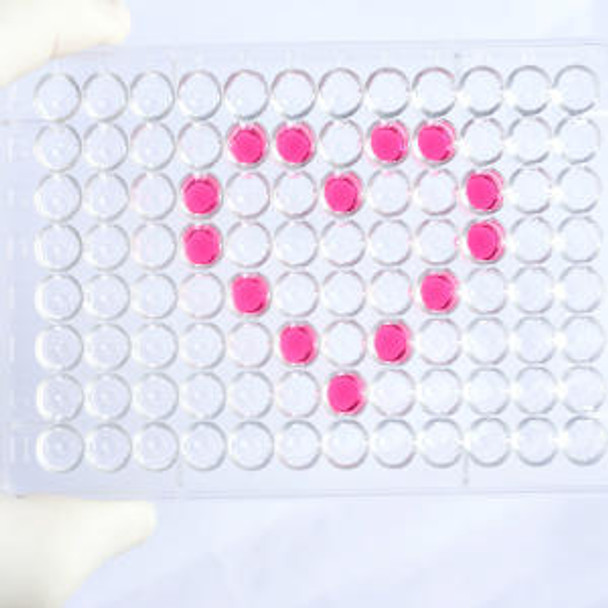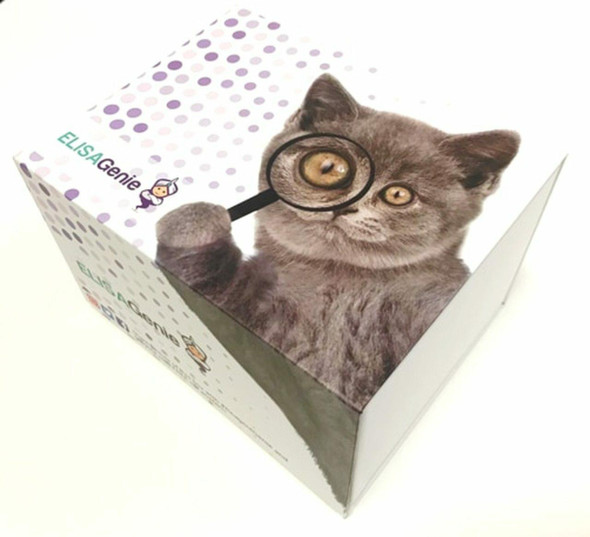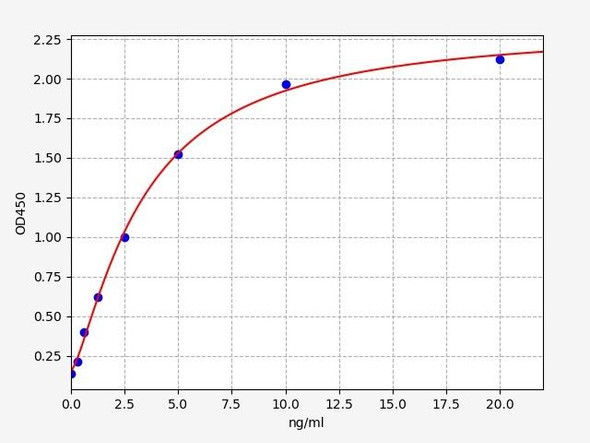Description
Human Toll-like receptor 8 (TLR8) ELISA Kit
Based on the information provided in the URL, the Human Toll-like Receptor 8 (TLR8) ELISA Kit is a cutting-edge tool specifically designed for the precise measurement of TLR8 levels in human samples such as serum, plasma, and cell culture supernatants. This advanced kit boasts exceptional sensitivity and specificity, ensuring the accuracy and reproducibility of results, thus making it an invaluable asset for a wide array of research endeavors.Toll-like Receptor 8 is a crucial component of the innate immune system, playing a vital role in detecting and responding to viral and bacterial pathogens. By recognizing conserved patterns in these foreign entities, TLR8 triggers immune responses that are essential for defense against infections and maintaining overall immune homeostasis.
Dysregulation of TLR8 has been implicated in various inflammatory disorders and autoimmune diseases, underscoring the significance of its accurate measurement for research and diagnostic purposes.In conclusion, the Human Toll-like Receptor 8 (TLR8) ELISA Kit serves as a valuable tool for studying the complex mechanisms of innate immunity and investigating potential therapeutic targets for various infectious and inflammatory conditions. Its high precision and reliability make it an indispensable resource for researchers and clinicians alike in the pursuit of advancing scientific understanding and improving patient care.
| Product Name: | Human Toll-like receptor 8 (TLR8) ELISA Kit |
| SKU: | HUEB2087 |
| Size: | 96T |
| Target: | Human Toll-like receptor 8 (TLR8) |
| Synonyms: | CD288, UNQ249/PRO286 |
| Assay Type: | Sandwich |
| Detection Method: | ELISA |
| Reactivity: | Human |
| Detection Range: | 0.156-10ng/mL |
| Sensitivity: | 0.078ng/mL |
| Intra CV: | Provided with the Kit |
| Inter CV: | Provided with the Kit |
| Linearity: | Provided with the Kit |
| Recovery: | Provided with the Kit |
| Function: | Key component of innate and adaptive immunity. TLRs (Toll-like receptors) control host immune response against pathogens through recognition of molecular patterns specific to microorganisms. Acts via MYD88 and TRAF6, leading to NF-kappa-B activation, cytokine secretion and the inflammatory response. |
| Uniprot: | Q9NR97 |
| Sample Type: | Serum, plasma, tissue homogenates, cell culture supernates and other biological fluids |
| Specificity: | Natural and recombinant human Toll-like receptor 8 |
| Sub Unit: | Interacts with MYD88 via their respective TIR domains. Interacts with UNC93B1 (By similarity). Homodimer. Interacts with BTK. Interacts with SMPDL3B. |
| Research Area: | Immunology |
| Subcellular Location: | Membrane Single-pass type I membrane protein |
| Storage: | Please see kit components below for exact storage details |
| Note: | For research use only |
| UniProt Protein Function: | TLR8: Key component of innate and adaptive immunity. TLRs (Toll-like receptors) control host immune response against pathogens through recognition of molecular patterns specific to microorganisms. Acts via MYD88 and TRAF6, leading to NF-kappa-B activation, cytokine secretion and the inflammatory response. Belongs to the Toll-like receptor family. |
| UniProt Protein Details: | Protein type:Receptor, misc.; Membrane protein, integral Chromosomal Location of Human Ortholog: Xp22 Cellular Component: Golgi membrane; endoplasmic reticulum membrane; integral to membrane; endosome membrane Molecular Function:single-stranded RNA binding; DNA binding; RNA binding; double-stranded RNA binding; receptor activity; drug binding Biological Process: I-kappaB kinase/NF-kappaB cascade; regulation of cytokine secretion; response to virus; positive regulation of interleukin-8 biosynthetic process; microglial cell activation; positive regulation of interferon-alpha biosynthetic process; toll-like receptor 8 signaling pathway; MyD88-dependent toll-like receptor signaling pathway; positive regulation of interferon-beta biosynthetic process; positive regulation of innate immune response; toll-like receptor signaling pathway; innate immune response; immunoglobulin mediated immune response; toll-like receptor 9 signaling pathway; inflammatory response; defense response to virus; positive regulation of interferon-gamma biosynthetic process |
| NCBI Summary: | The protein encoded by this gene is a member of the Toll-like receptor (TLR) family which plays a fundamental role in pathogen recognition and activation of innate immunity. TLRs are highly conserved from Drosophila to humans and share structural and functional similarities. They recognize pathogen-associated molecular patterns (PAMPs) that are expressed on infectious agents, and mediate the production of cytokines necessary for the development of effective immunity. The various TLRs exhibit different patterns of expression. This gene is predominantly expressed in lung and peripheral blood leukocytes, and lies in close proximity to another family member, TLR7, on chromosome X. [provided by RefSeq, Jul 2008] |
| UniProt Code: | Q9NR97 |
| NCBI GenInfo Identifier: | 20140873 |
| NCBI Gene ID: | 51311 |
| NCBI Accession: | Q9NR97.1 |
| UniProt Secondary Accession: | Q9NR97,Q495P4, Q6UXL6, Q9NYG9, B3Y654, D1CS70, D1CS76 |
| UniProt Related Accession: | Q9NR97 |
| Molecular Weight: | Calculated MW:1195Da/121kDaOberverd MW: 115kDa |
| NCBI Full Name: | Toll-like receptor 8 |
| NCBI Synonym Full Names: | toll-like receptor 8 |
| NCBI Official Symbol: | TLR8 |
| NCBI Official Synonym Symbols: | CD288 |
| NCBI Protein Information: | toll-like receptor 8 |
| UniProt Protein Name: | Toll-like receptor 8 |
| UniProt Synonym Protein Names: | CD_antigen: CD288 |
| Protein Family: | Toll-like receptor |
| UniProt Gene Name: | TLR8 |
| UniProt Entry Name: | TLR8_HUMAN |
| Component | Quantity (96 Assays) | Storage |
| ELISA Microplate (Dismountable) | 8×12 strips | -20°C |
| Lyophilized Standard | 2 | -20°C |
| Sample Diluent | 20ml | -20°C |
| Assay Diluent A | 10mL | -20°C |
| Assay Diluent B | 10mL | -20°C |
| Detection Reagent A | 120µL | -20°C |
| Detection Reagent B | 120µL | -20°C |
| Wash Buffer | 30mL | 4°C |
| Substrate | 10mL | 4°C |
| Stop Solution | 10mL | 4°C |
| Plate Sealer | 5 | - |
Other materials and equipment required:
- Microplate reader with 450 nm wavelength filter
- Multichannel Pipette, Pipette, microcentrifuge tubes and disposable pipette tips
- Incubator
- Deionized or distilled water
- Absorbent paper
- Buffer resevoir
*Note: The below protocol is a sample protocol. Protocols are specific to each batch/lot. For the correct instructions please follow the protocol included in your kit.
Allow all reagents to reach room temperature (Please do not dissolve the reagents at 37°C directly). All the reagents should be mixed thoroughly by gently swirling before pipetting. Avoid foaming. Keep appropriate numbers of strips for 1 experiment and remove extra strips from microtiter plate. Removed strips should be resealed and stored at -20°C until the kits expiry date. Prepare all reagents, working standards and samples as directed in the previous sections. Please predict the concentration before assaying. If values for these are not within the range of the standard curve, users must determine the optimal sample dilutions for their experiments. We recommend running all samples in duplicate.
| Step | |
| 1. | Add Sample: Add 100µL of Standard, Blank, or Sample per well. The blank well is added with Sample diluent. Solutions are added to the bottom of micro ELISA plate well, avoid inside wall touching and foaming as possible. Mix it gently. Cover the plate with sealer we provided. Incubate for 120 minutes at 37°C. |
| 2. | Remove the liquid from each well, don't wash. Add 100µL of Detection Reagent A working solution to each well. Cover with the Plate sealer. Gently tap the plate to ensure thorough mixing. Incubate for 1 hour at 37°C. Note: if Detection Reagent A appears cloudy warm to room temperature until solution is uniform. |
| 3. | Aspirate each well and wash, repeating the process three times. Wash by filling each well with Wash Buffer (approximately 400µL) (a squirt bottle, multi-channel pipette,manifold dispenser or automated washer are needed). Complete removal of liquid at each step is essential. After the last wash, completely remove remaining Wash Buffer by aspirating or decanting. Invert the plate and pat it against thick clean absorbent paper. |
| 4. | Add 100µL of Detection Reagent B working solution to each well. Cover with the Plate sealer. Incubate for 60 minutes at 37°C. |
| 5. | Repeat the wash process for five times as conducted in step 3. |
| 6. | Add 90µL of Substrate Solution to each well. Cover with a new Plate sealer and incubate for 10-20 minutes at 37°C. Protect the plate from light. The reaction time can be shortened or extended according to the actual color change, but this should not exceed more than 30 minutes. When apparent gradient appears in standard wells, user should terminatethe reaction. |
| 7. | Add 50µL of Stop Solution to each well. If color change does not appear uniform, gently tap the plate to ensure thorough mixing. |
| 8. | Determine the optical density (OD value) of each well at once, using a micro-plate reader set to 450 nm. User should open the micro-plate reader in advance, preheat the instrument, and set the testing parameters. |
| 9. | After experiment, store all reagents according to the specified storage temperature respectively until their expiry. |
When carrying out an ELISA assay it is important to prepare your samples in order to achieve the best possible results. Below we have a list of procedures for the preparation of samples for different sample types.
| Sample Type | Protocol |
| Serum | If using serum separator tubes, allow samples to clot for 30 minutes at room temperature. Centrifuge for 10 minutes at 1,000x g. Collect the serum fraction and assay promptly or aliquot and store the samples at -80°C. Avoid multiple freeze-thaw cycles. If serum separator tubes are not being used, allow samples to clot overnight at 2-8°C. Centrifuge for 10 minutes at 1,000x g. Remove serum and assay promptly or aliquot and store the samples at -80°C. Avoid multiple freeze-thaw cycles. |
| Plasma | Collect plasma using EDTA or heparin as an anticoagulant. Centrifuge samples at 4°C for 15 mins at 1000 × g within 30 mins of collection. Collect the plasma fraction and assay promptly or aliquot and store the samples at -80°C. Avoid multiple freeze-thaw cycles. Note: Over haemolysed samples are not suitable for use with this kit. |
| Urine & Cerebrospinal Fluid | Collect the urine (mid-stream) in a sterile container, centrifuge for 20 mins at 2000-3000 rpm. Remove supernatant and assay immediately. If any precipitation is detected, repeat the centrifugation step. A similar protocol can be used for cerebrospinal fluid. |
| Cell culture supernatant | Collect the cell culture media by pipette, followed by centrifugation at 4°C for 20 mins at 1500 rpm. Collect the clear supernatant and assay immediately. |
| Cell lysates | Solubilize cells in lysis buffer and allow to sit on ice for 30 minutes. Centrifuge tubes at 14,000 x g for 5 minutes to remove insoluble material. Aliquot the supernatant into a new tube and discard the remaining whole cell extract. Quantify total protein concentration using a total protein assay. Assay immediately or aliquot and store at ≤ -20 °C. |
| Tissue homogenates | The preparation of tissue homogenates will vary depending upon tissue type. Rinse tissue with 1X PBS to remove excess blood & homogenize in 20ml of 1X PBS (including protease inhibitors) and store overnight at ≤ -20°C. Two freeze-thaw cycles are required to break the cell membranes. To further disrupt the cell membranes you can sonicate the samples. Centrifuge homogenates for 5 mins at 5000xg. Remove the supernatant and assay immediately or aliquot and store at -20°C or -80°C. |
| Tissue lysates | Rinse tissue with PBS, cut into 1-2 mm pieces, and homogenize with a tissue homogenizer in PBS. Add an equal volume of RIPA buffer containing protease inhibitors and lyse tissues at room temperature for 30 minutes with gentle agitation. Centrifuge to remove debris. Quantify total protein concentration using a total protein assay. Assay immediately or aliquot and store at ≤ -20 °C. |
| Breast Milk | Collect milk samples and centrifuge at 10,000 x g for 60 min at 4°C. Aliquot the supernatant and assay. For long term use, store samples at -80°C. Minimize freeze/thaw cycles. |








